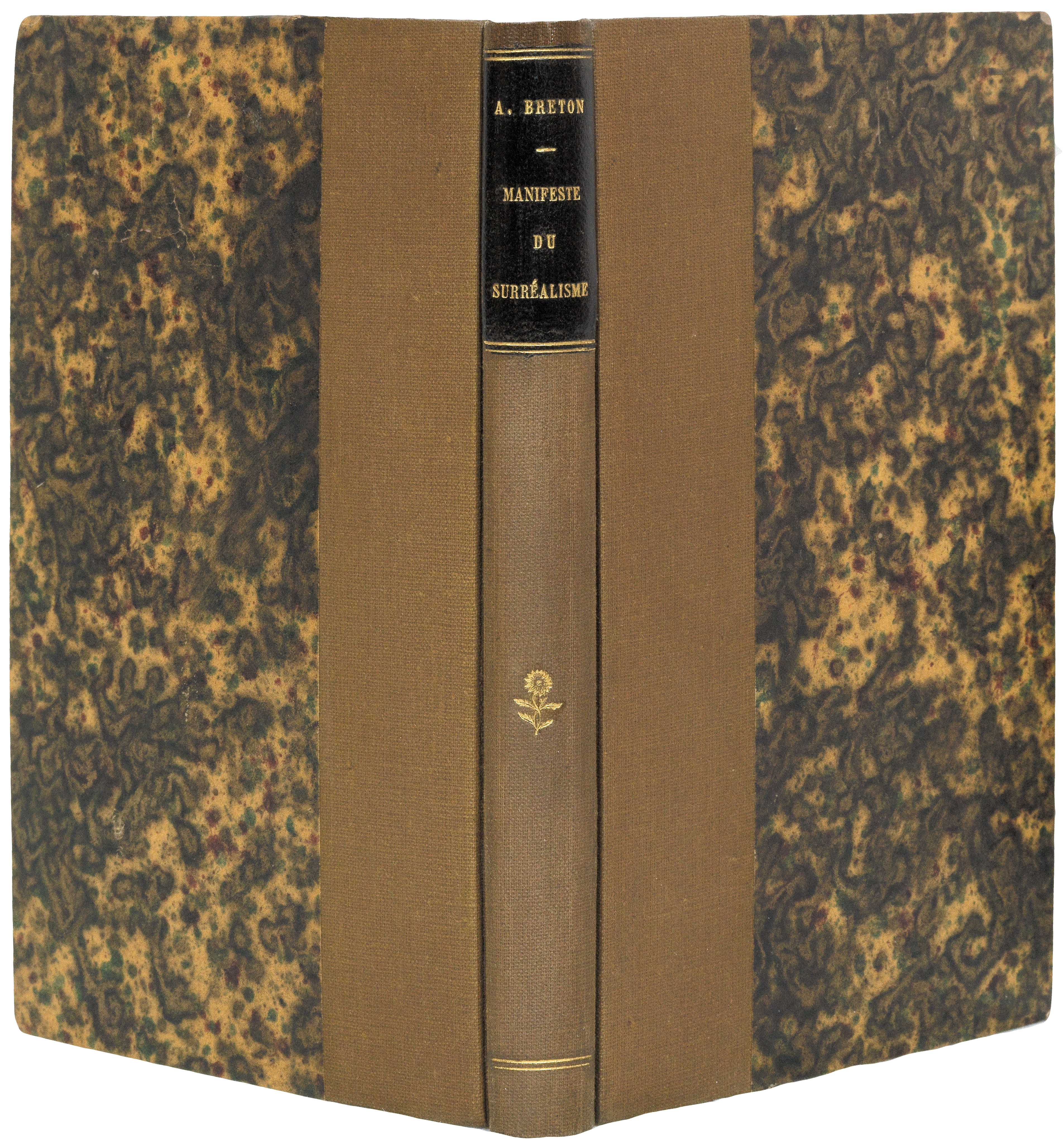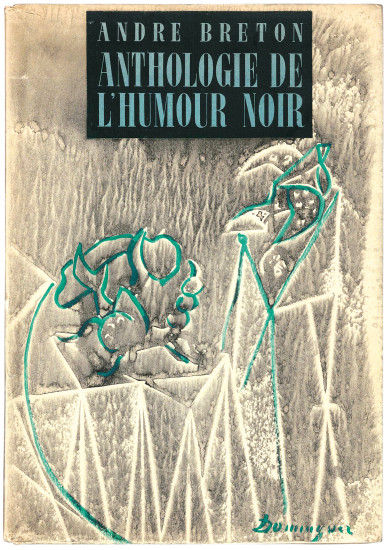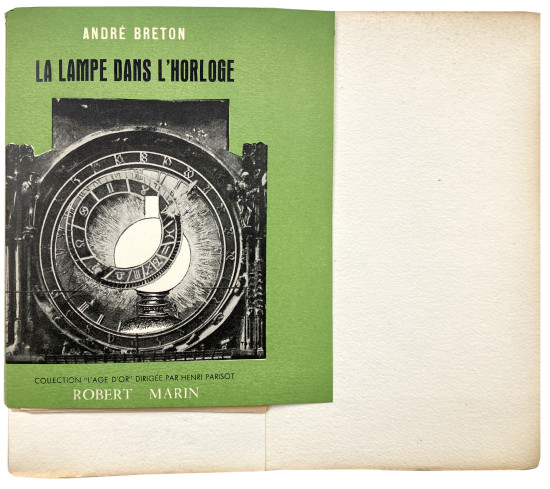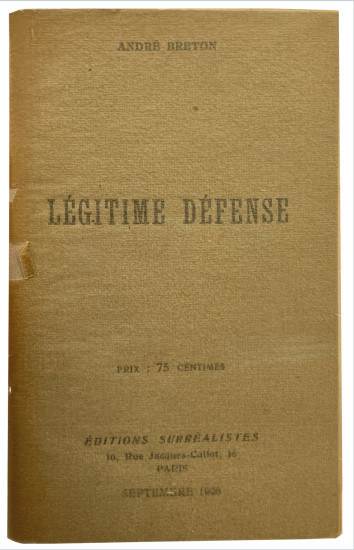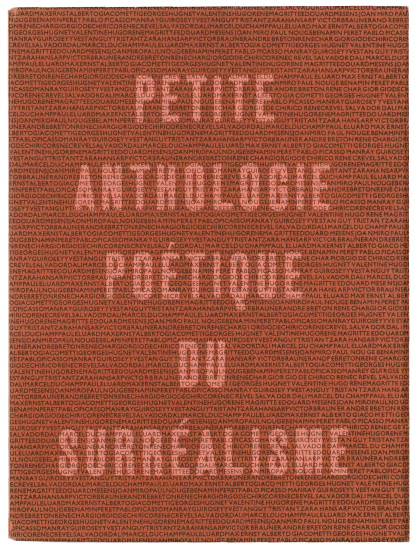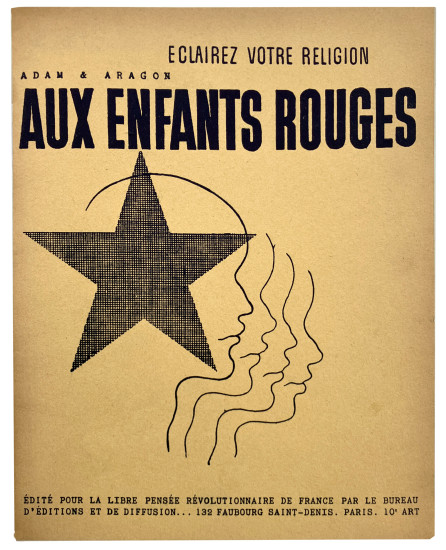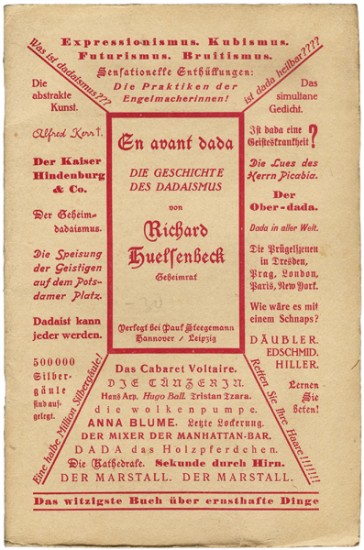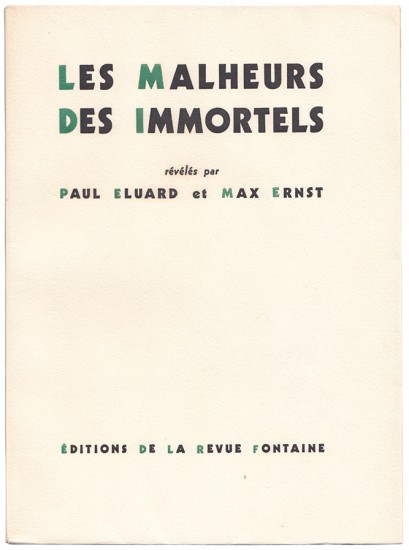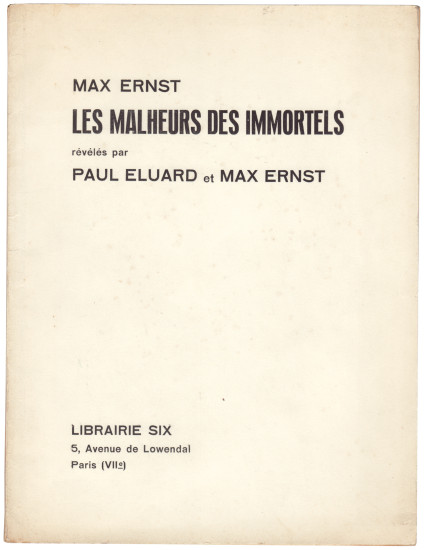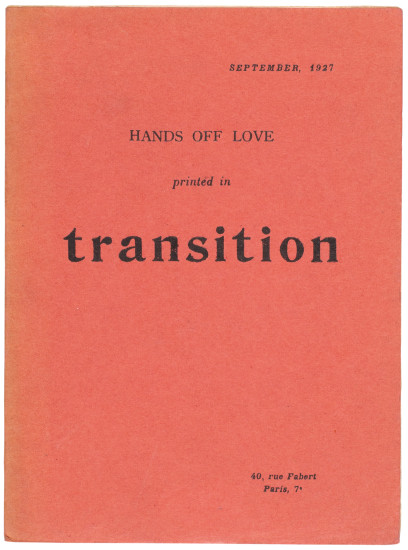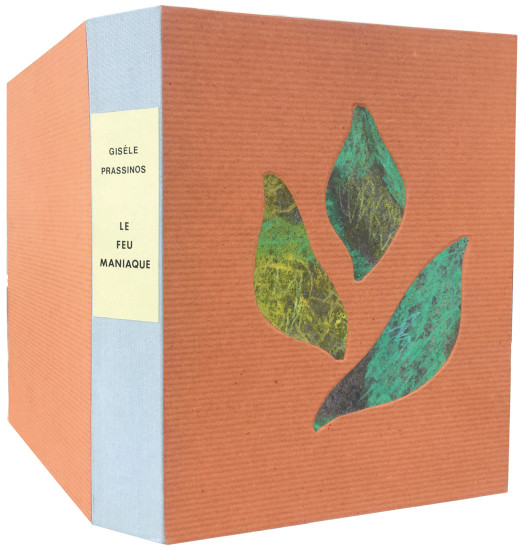Manifeste du Surréalisme. Poisson Soluble
Breton, André
Paris. Aux Editions du Sagittaire. 1924
André Breton's copy of the first edition of the first Surrealist manifesto later given - with a tender poetic presentation - to his future wife Elisa.
Breton's long and evocative presentation is in black ink to the half-title: 'A l'étoile / à l'arcane 17 / par les yeux d'Isis / et cette région de la tempe / où passe dans un éclair / Bonaparte à Arcole, / ELISA / toi qui est l'Acacia et la Rose / mon amour / André / New York 1944'.
Elisa Claro, née Bindhoff (1906 - 2000), was Breton's third and last wife. Breton and Elisa met in 1943 in New York where they frequented the same restaurant. Breton had left France for the United States in 1941, increasingly apprehensive at the behaviour of the Vichy government and its attitude to artists and intellectuals. It was under Elisa's influence and inspired by her that Breton wrote 'Arcane 17' to which he alludes in his presentation and which he ultimately dedicated to her, giving her the manuscript. After Breton's death in 1966, Elisa continued to be involved in Surrealism and Surrealist activities.
Breton has also written across pages 24 and 25 'Tu vois, c'est comme si je t'avais vue venir' and drawn arrows to two passages; the first passage reads: 'Tranchons-en: le merveilleux est toujours beau, n'importe quel merveilleux est beau, il n'y a même que le merveilleux qui soit beau' and the second: 'Ce qu'il y a d'admirable dans le fantastique, c'est qu'il n'y a plus de fantastique: il n'y a que le réel.'
Surrealism was launched into an unsuspecting modern world by André Breton, Louis Aragon, Paul Eluard, Max Ernst, Antonin Artaud et al. with a cry of: 'We say in particular to the Western world: surrealism exists. And what is this new ism that is fastened to us? Surrealism is not a poetic form. It is a cry of the mind turning back on itself, and it is determined to break apart its fetters, even if it must be by material hammers!'.
[Provenance: Sale of André Breton's library: 'André Breton, 42, rue Fontaine', 1st - 9th April, 2003, Livres I, lot 122].
Breton's long and evocative presentation is in black ink to the half-title: 'A l'étoile / à l'arcane 17 / par les yeux d'Isis / et cette région de la tempe / où passe dans un éclair / Bonaparte à Arcole, / ELISA / toi qui est l'Acacia et la Rose / mon amour / André / New York 1944'.
Elisa Claro, née Bindhoff (1906 - 2000), was Breton's third and last wife. Breton and Elisa met in 1943 in New York where they frequented the same restaurant. Breton had left France for the United States in 1941, increasingly apprehensive at the behaviour of the Vichy government and its attitude to artists and intellectuals. It was under Elisa's influence and inspired by her that Breton wrote 'Arcane 17' to which he alludes in his presentation and which he ultimately dedicated to her, giving her the manuscript. After Breton's death in 1966, Elisa continued to be involved in Surrealism and Surrealist activities.
Breton has also written across pages 24 and 25 'Tu vois, c'est comme si je t'avais vue venir' and drawn arrows to two passages; the first passage reads: 'Tranchons-en: le merveilleux est toujours beau, n'importe quel merveilleux est beau, il n'y a même que le merveilleux qui soit beau' and the second: 'Ce qu'il y a d'admirable dans le fantastique, c'est qu'il n'y a plus de fantastique: il n'y a que le réel.'
Surrealism was launched into an unsuspecting modern world by André Breton, Louis Aragon, Paul Eluard, Max Ernst, Antonin Artaud et al. with a cry of: 'We say in particular to the Western world: surrealism exists. And what is this new ism that is fastened to us? Surrealism is not a poetic form. It is a cry of the mind turning back on itself, and it is determined to break apart its fetters, even if it must be by material hammers!'.
[Provenance: Sale of André Breton's library: 'André Breton, 42, rue Fontaine', 1st - 9th April, 2003, Livres I, lot 122].
pp. 190, (i), (ii). 8vo. (191 x 124 mm). Half-title with 'Du Même Auteur' verso, printed title with publisher's vignette and limitation and copyright verso, text of the manifesto with the three page typographic 'Poème' (pp. 66 - 68), text of 'Poisson Soluble' (pp. 75 - 190), leaf with 'Table' recto, leaf with advertisements recto and achevé d'imprimer verso. Contemporary cloth-backed marbled boards, leather label with title gilt to spine, original orange publisher's printed wrappers with titles to front cover and spine and backstrip retained, later morocco-backed chemise and slipcase by Devauchelle.
#30587
